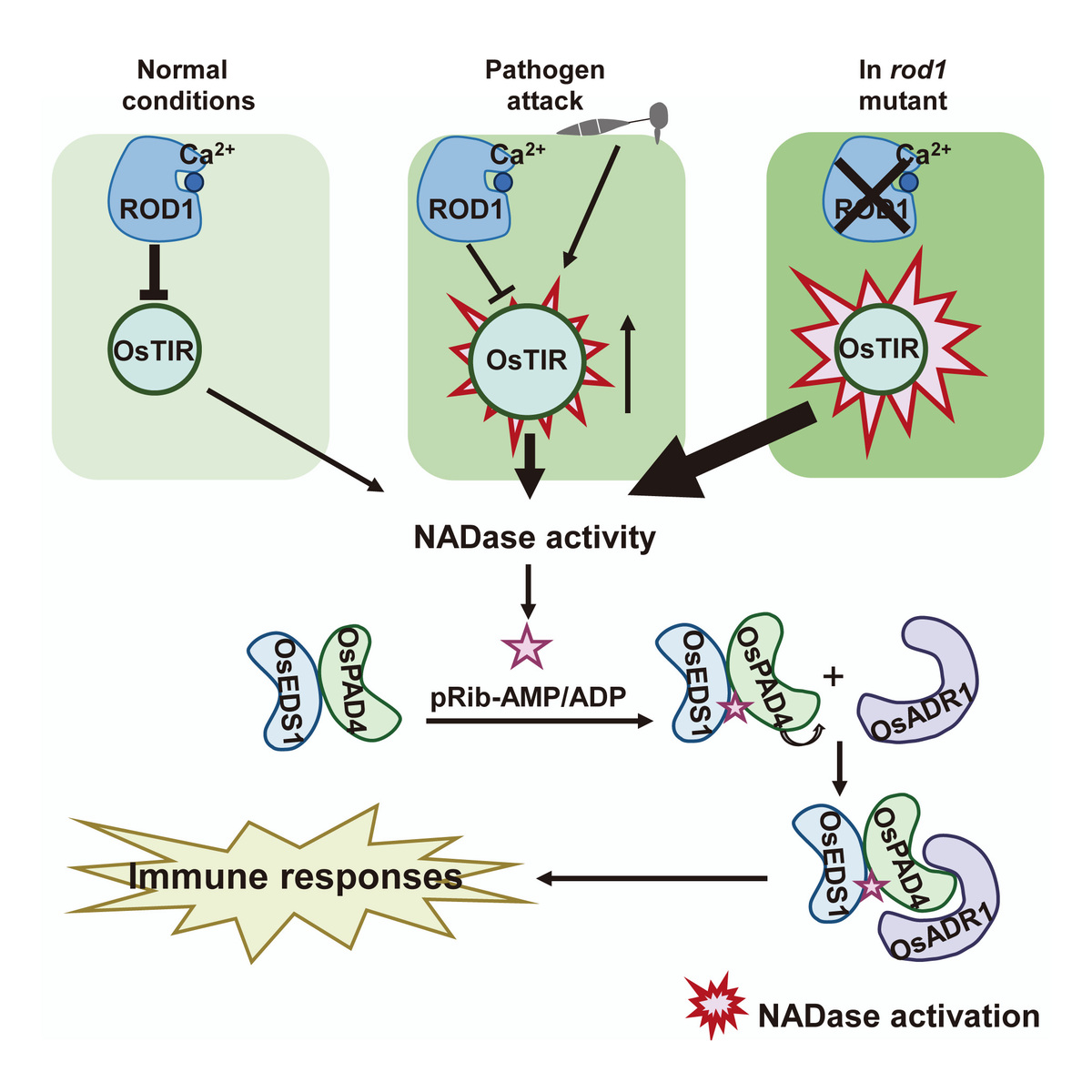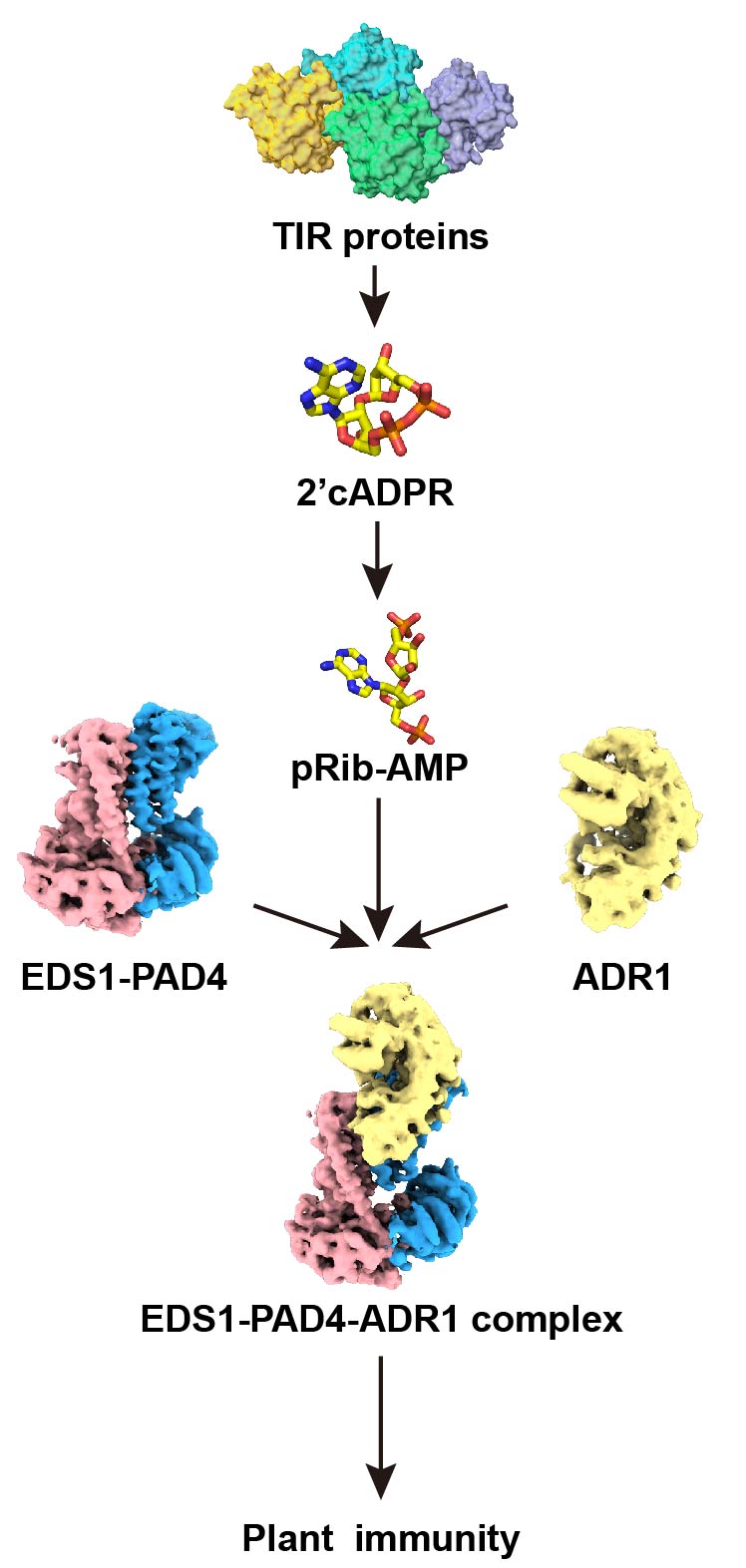Chinese Scientists Achieve Possible Breakthrough in Plant Diseases
A+ / A-

Working model of immune control mediated by an important immune network ROD1-OsTIR-EPA. [Photo provided to China Daily]
Chinese scientists have discovered a small molecule in plant cells that can trigger immunity. This molecule, which has been patented, holds the potential to be developed into a broad-spectrum biopesticide, aiding plants such as crops in resisting diseases.
"Once this biopesticide is put into use, it can function when sprayed on the plant surface and absorbed by the plant. Based on existing scientific knowledge, it potentially can be applied to different plants and combat many diseases," said Wan Li, a researcher at the Center for Excellence in Molecular Science of the Chinese Academy of Sciences.
"This small molecule originates from the plant itself, hence it's safe. It can inhibit pathogen invasion without causing harm to plants, humans, or the ecosystem when properly used," said Wan. The research findings of his team, titled "Activation of a helper NLR by plant and bacterial TIR immune signaling", were published in the prestigious international academic journal Science on Friday.

Hydrolytic conversion of TIR produced 2'cADPR into pRib-AMP induces EPA complex formation and activates plant immunity. [Photo provided to China Daily]
Wan's team conducted their research using the laboratory model plant Arabidopsis thaliana. He explained that in the case of Arabidopsis, there are nearly 150 such immune sensors in plant cells. Different sensors react to corresponding pathogens and produce the same small molecule, 2'cADPR, which triggers the plant's disease resistance.
"Since specific sensors can only defend plants against specific pathogens, achieving effective broad-spectrum disease resistance against multiple pathogens has become a crucial topic in plant immunity research," Wan said.
"Sensors are specific, but they all produce 2'cADPR upon activation. By producing this small molecule, we bypass the specificity of the sensors, achieving broad-spectrum disease resistance," he added.
Wan mentioned that the small molecule discovered by his team has already been patented and put into production. The next step is to continue proving its actual broad-spectrum disease resistance in the field and hopefully soon put it into use.
Another study published concurrently on the same journal, titled "A canonical protein complex controls immune homeostasis and multipathogen resistance", verified the broad-spectrum effectiveness of this immune pathway in rice.
The research was carried out in collaboration by the research teams of academician He Zuhua and Professor Zhang Yu from the Molecular Plant Science Excellence Innovation Center of the Chinese Academy of Sciences, Professor Gao Mingjun from Fudan University and Professor Deng Yiwen from Zhejiang University.
Plants have evolved two layers of immune system to resist diseases: one is the basic disease resistance functioning on the plant surface, which is generally weak, and the other is race-specific resistance triggered by the sensor proteins when encountering pathogens.
"As early as 2021, the collaborative team has demonstrated that a specific gene Rod1 in rice can inhibit disease resistance. The signaling pathway of ROD1 that inhibits immune activation has not been clarified," Deng said.
With further research, the team has revealed a five-component signaling network that regulates plant immune homeostasis, providing an important theoretical basis and target gene for breeding crops with broad-spectrum resistance to multiple pathogens.
The collaborative team demonstrates that the OsTIR protein, a cellular receptor in rice, also generate the immune small molecule pRib-AMP, which can activate the OsEDS1, OsPAD4, and OsADR1 proteins to form the immune complex EPA to activate the immune response.
Further research found that the rice immune inhibitor protein ROD1 interacts with OsTIR, inhibiting the generation of the small molecule pRib-AMP, avoiding the EPA complex from stimulating the immune response and maintaining immune homeostasis.
Once pathogens attack, ROD1 is degraded, OsTIR protein is released to generate the small molecule that activates the immune complex EPA, producing broad-spectrum resistance to multiple pathogens.
Wan said that in the past, crops' resistance to pests and diseases mainly relied on chemical pesticides, which not only harm the ecosystem but also pose certain risks to human health.
Two teams of Chinese scientists have made breakthroughs in plant broad-spectrum disease resistance from the perspectives of enhanced immune response and biopesticides. Both solutions address the issues of harm to the environment and human health simultaneously. (China Daily)
